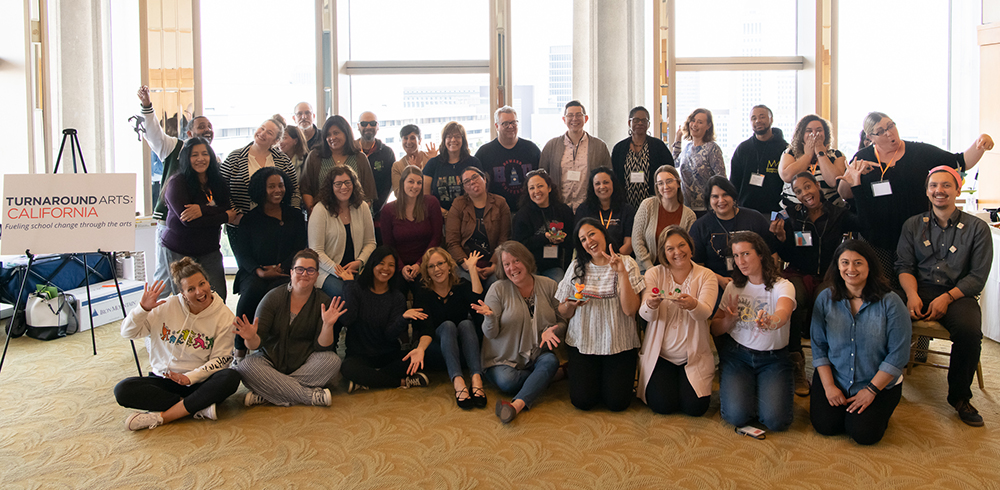
Annually we survey teachers at our 24 partner schools across the state to understand the impacts of the Turnaround Arts program on their work as teachers, their school as a whole, and the impact they are seeing on their students. We also collect data to inform our progress toward our four Priorities for Improvement Through the Arts (PITA):
- Cultivate shared vision and collaborative school leadership in and through the arts.
- Improve teacher capacity to integrate the arts into classroom instruction to provide multiple, culturally and linguistically responsive entry points for learning.
- Through the arts, build a positive culture and climate that embraces equity and growth mindset, in order to support risk-taking, collaboration, and empathy, and to honor student voice and agency.
- Engage family and community members as participants, advocates, volunteers, and equitable partners in learning.
We received 587 anonymous responses from faculty across our 24 partner schools and found the following results:
Shared leadership in and through the arts
86% of respondents agree or strongly agree that their school uses a shared leadership approach to the arts.
““Turnaround Arts has allowed for me to have a lot of leadership within the school. I have loved learning new teaching practices, learning how to partner with teaching artists and how to truly integrate arts into not only my classroom, but my school.”
Teacher capacity to integrate the arts into the classroom
82% of respondents agree or strongly agree that support and training for teachers in the arts is ongoing and embedded at their school. Additionally, 88% of respondents integrated the arts into classroom instruction at least once a month, and 52% integrated at least once a week.
“I am a veteran teacher. The Arts have completely changed the way I teach. I have moved from lecturer to facilitator. My students are expected to use communication, creativity and collaboration to learn from each other. I model what is expected and give them the opportunity to develop their learning from each other and from group cooperation. I am excited to tell you that I have been reborn to teaching. I feel great growing critical 21st century thinkers.”
Additionally, 98% of teachers reported that the arts had a positive or very positive impact on students this year at their school. In particular, teachers reported improved learning, including comprehension, retention, and critical thinking skills; social emotional learning, including self-confidence, collaboration skills, community-building, and willingness to take risks; and excitement, joy and fun. About a third of teachers wrote specifically about how the arts benefit specific student populations for whom school is not traditionally designed:
“Students who have trouble demonstrating their understanding through words found it easier to show what they knew by using art strategies. For instance, a student who couldn’t write a paragraph to describe how a character felt, used shadow puppets to display their thinking.“
“The arts have given my students a voice and a platform in which they feel equal to their peers and are able to express themselves.“
Culture and Climate
90% of respondents agree or strongly agree that their school’s atmosphere and culture celebrates creativity and artistic achievement.
“[Turnaround Arts: CA has] changed everything for the better! It’s a new lens of support that is meant to strengthen everything from students’ social emotional needs, academic, and community engagement. As a school we integrate the arts in our school and community culture. I have learned so many tools from my mentor. When I applied these strategies in my own classroom I saw tremendous bounds in my students abilities in every area. This partnership has also helped strengthen our bond with our community who love to come onto campus and see our beautiful art!!”
Family and Community Engagement
88.5% of respondents agree or strongly agree that their school regularly engages families through the arts. This question was asked for the first time this year.
“I know with distance learning the arts provided a way to engage the whole family and to bring joy to my students during a stressful time.
We thank our partner schools for their participation in this survey! It is a good indicator that our partnerships with schools is shifting culture, leadership, and instruction in a positive direction. Teachers are teaching in new ways, and as a result, see their students engaging in new ways. The arts are creating school cultures that welcomes families, celebrates creativity and builds community.
